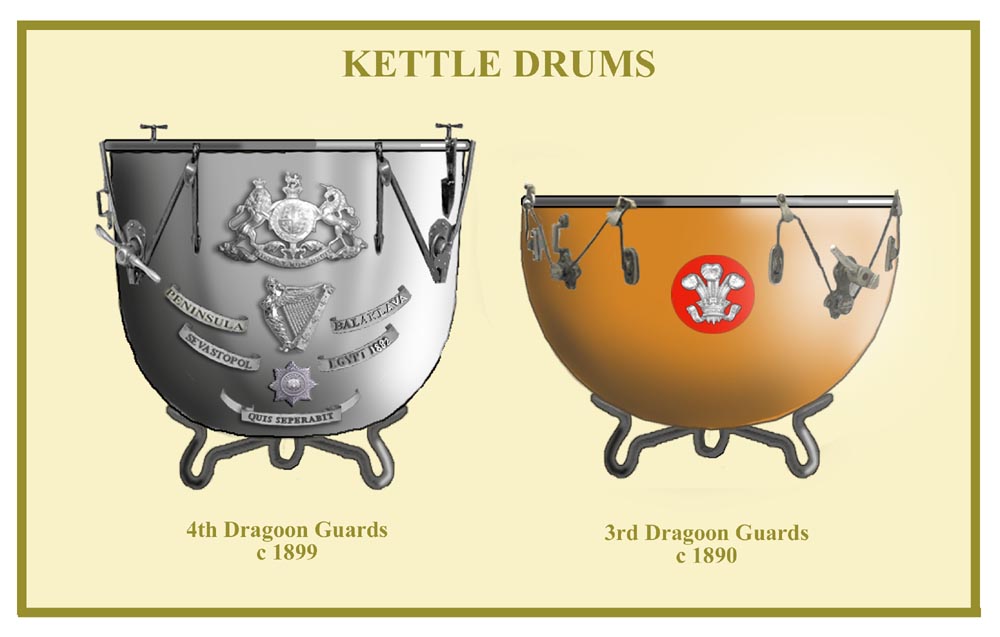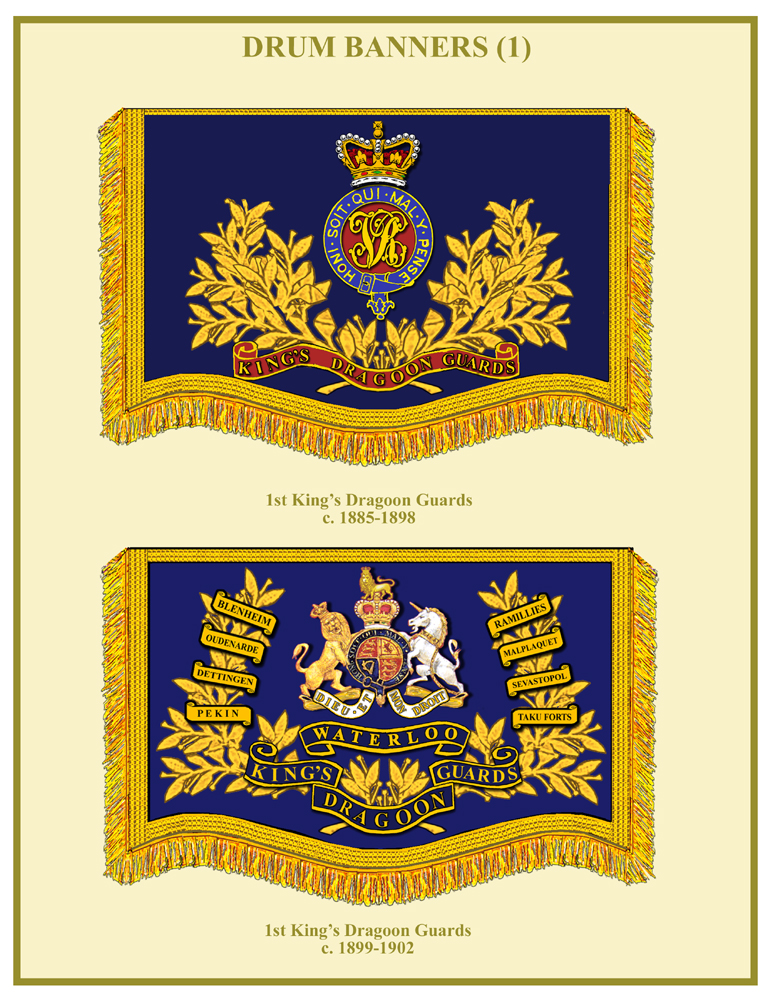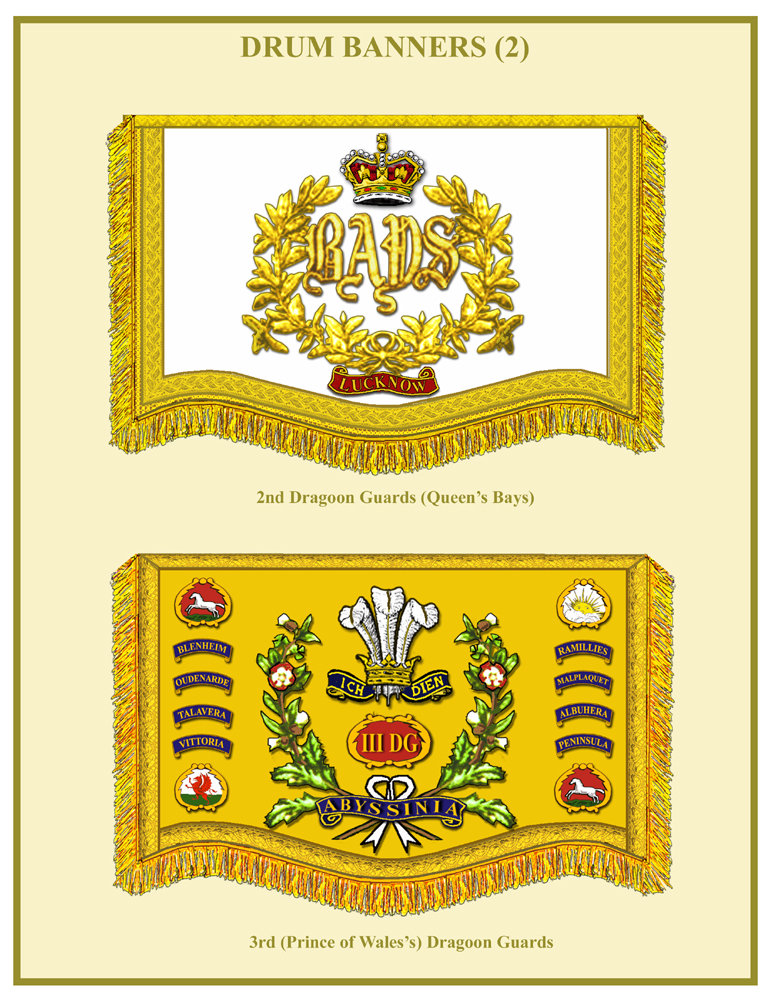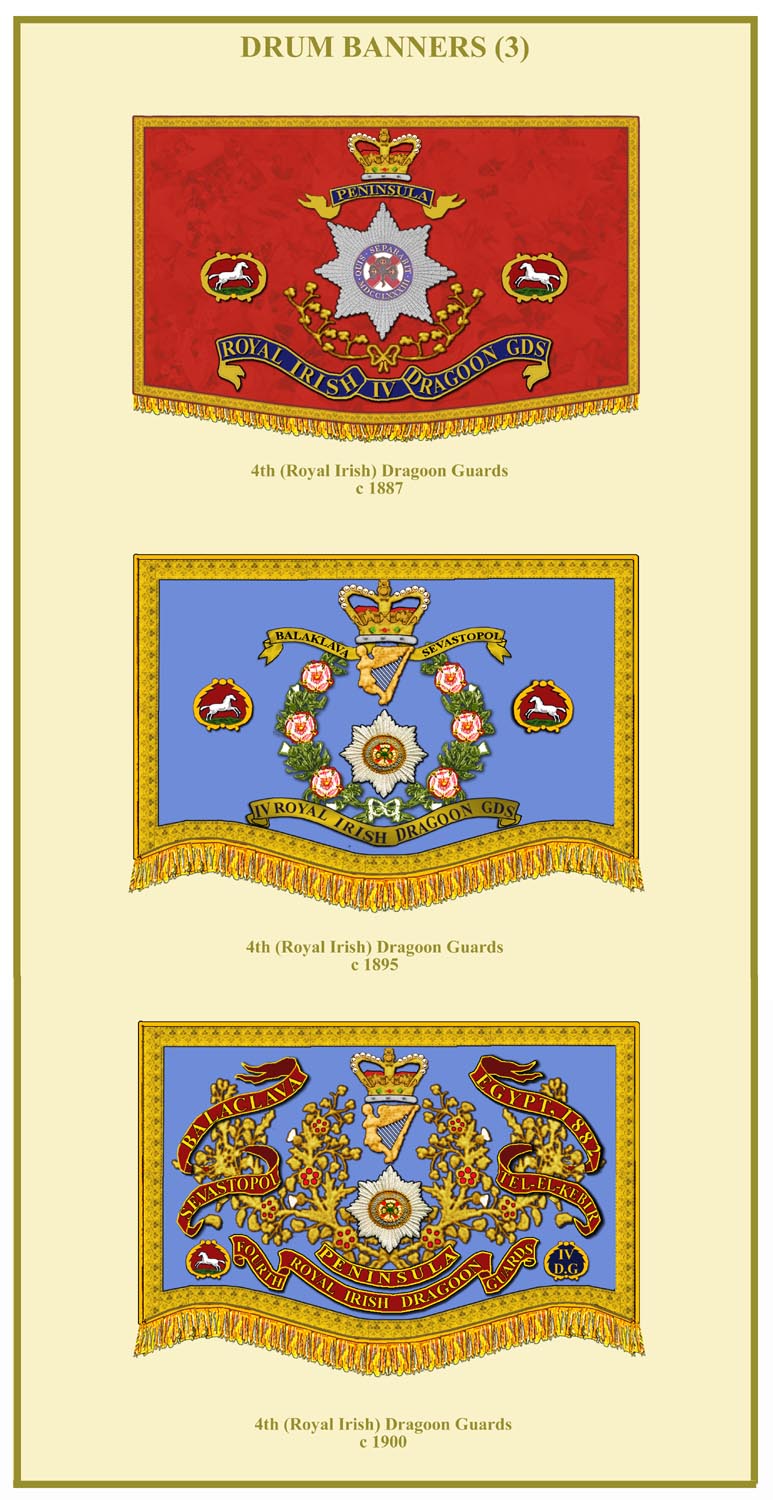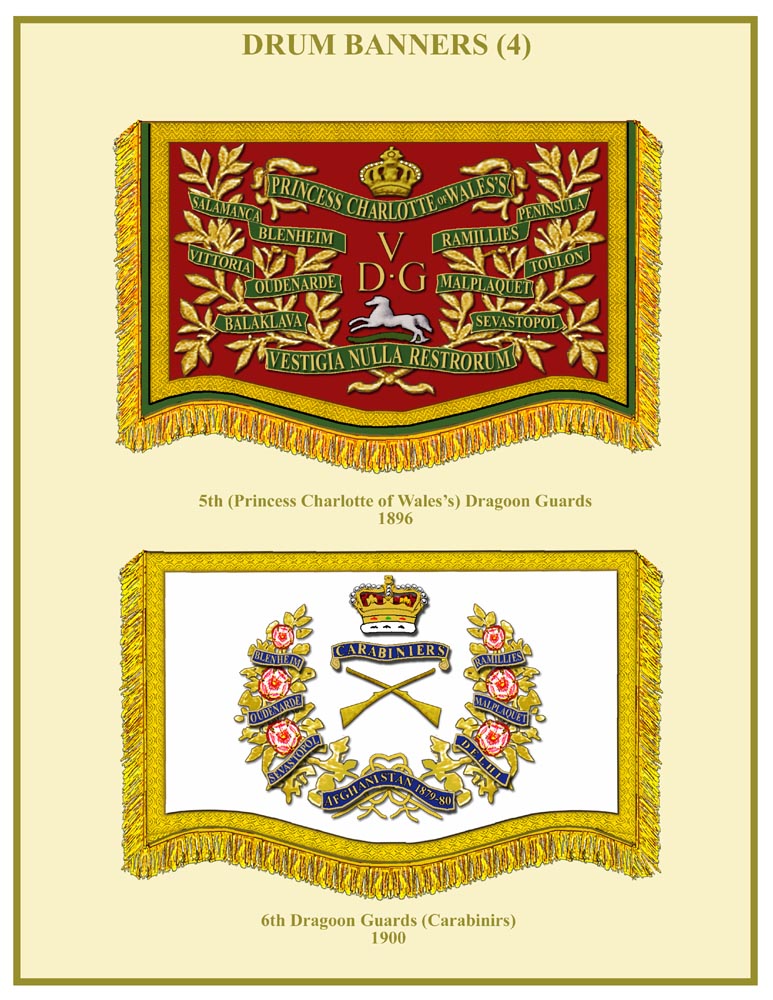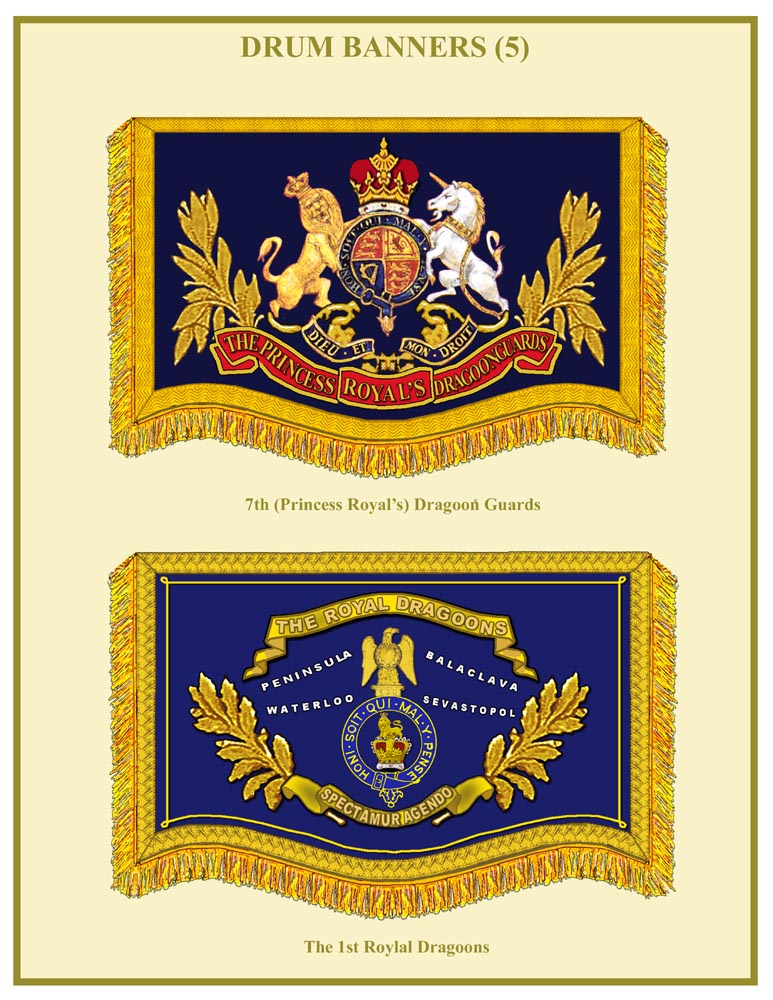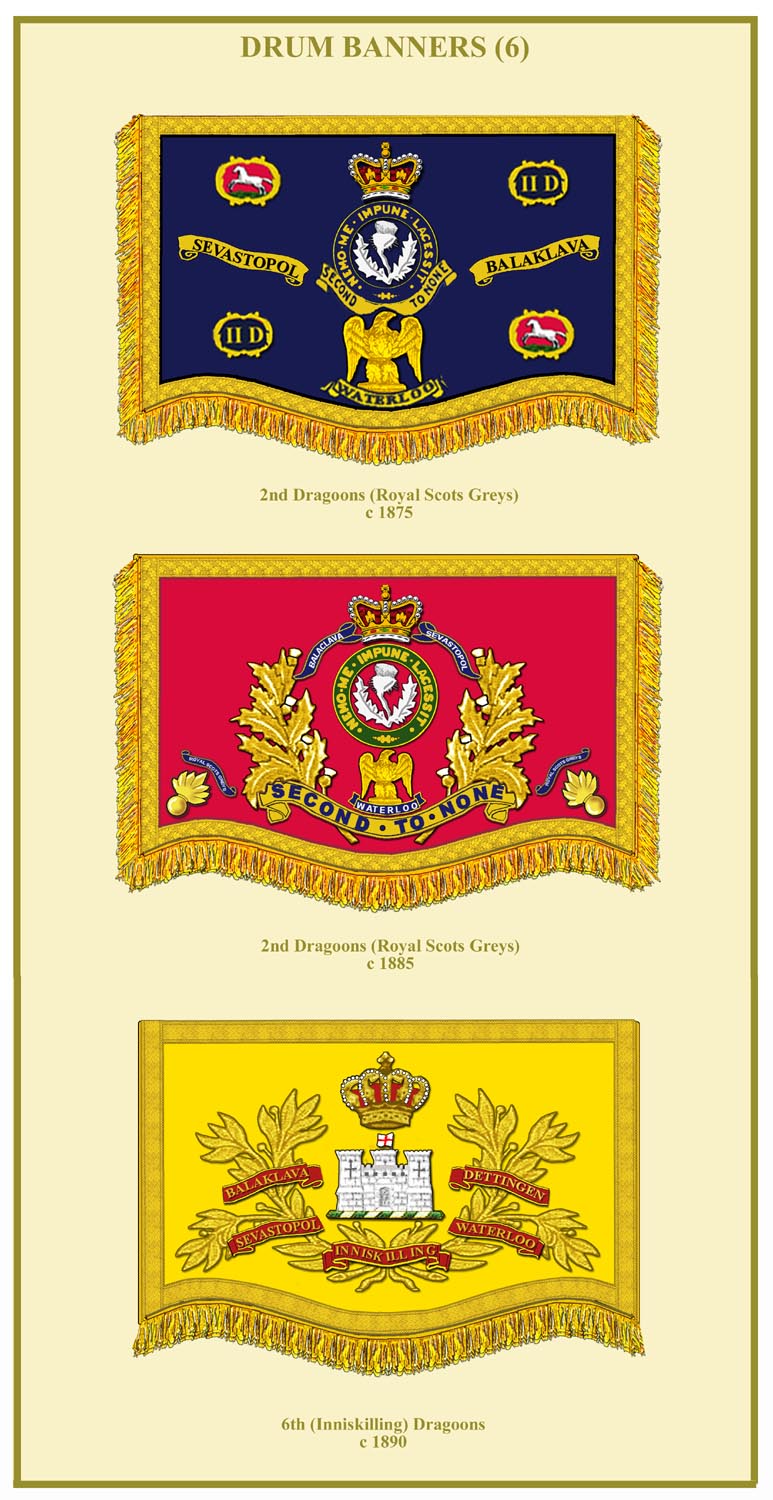HEAVY CAVALRY UNIFORMS, ARMS & EQUIPMENT - DRAGOON GUARDS & DRAGOONS
KETTLE DRUMS and DRUM BANNERS
In the realm of military pageantry, there is no sight more spectacular than that of a mounted band. The massed mounted bands of the Household Cavalry always produce a thrill at the Trooping the Colour and other State occasions. France, Denmark, Sweden and Spain still maintain units with mounted bands as do other countries. In all cases, the principle focus is often on the kettle-drummer, always at the front of the band flourishing his mallets above his drums either side of his saddle which are usually draped in colourful banners. In the seventeenth and eighteenth centuries, kettle drums were an important element on the battlefield, sending signals to cavalry formations and providing a cadence for a charge. As such, these drums often assumed an importance equal to that of a regimental standard or infantry colours and would be prized as trophies when captured. Regiments in possession of these prizes would use them as their own drums in the future.
In Great Britain one hundred and twenty years ago, every cavalry regiment as well as the Royal Artillery maintained a mounted band. During the last twenty years of the Victorian era these bands matured as institutions and could be seen at military parades and civic functions all over the country as well as stations overseas. The kettle drums were often basic timpani instruments purchased from firms that manufactured them. In some cases, however they were presentation items, often in silver plate awarded by Royalty or other personages. Some were much revered regimental trophies of some antiquity.
The Drum Banner has retained a particular significance with cavalry regiments. When the light cavalry lost their guidons, much of the identity they provided was transferred to the drum banners. Even in the Dragoon Guards and Dragoons, the strict regulations and the twenty year longevity expected from standards and guidons may have driven regiments to put more expression into the drum banners. As drum banners became more common from the eighteen fifties, they were often made up from old squadron standards and guidons and would depict the crown on a wreath with the regimental title. However, in the last twenty years of the nineteenth century, the designs of regimental drum banners blossomed. The unique designs were often placed on cloth of facing colour with badges, battle honours and mottoes displayed on copious sprays of laurel. When on parade in front of the band, the drum banners became the outward expression of regimental pride in its achievement and traditions.
Contemporary photographs provide the primary source for which drum banners were carried and when. Prior to the late 1890s such sources are sparse and I’m sure that intense research would reveal more than is shown here, but there is at least one example for every regiment of Dragoon Guards and Dragoons.



